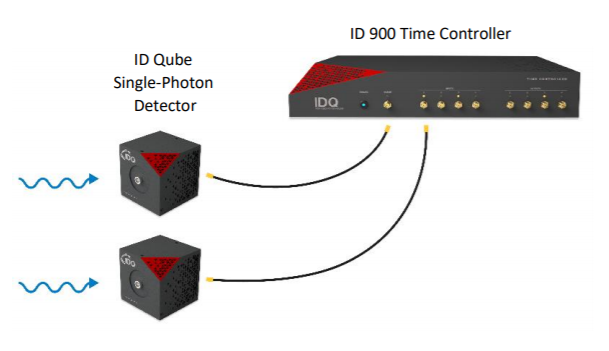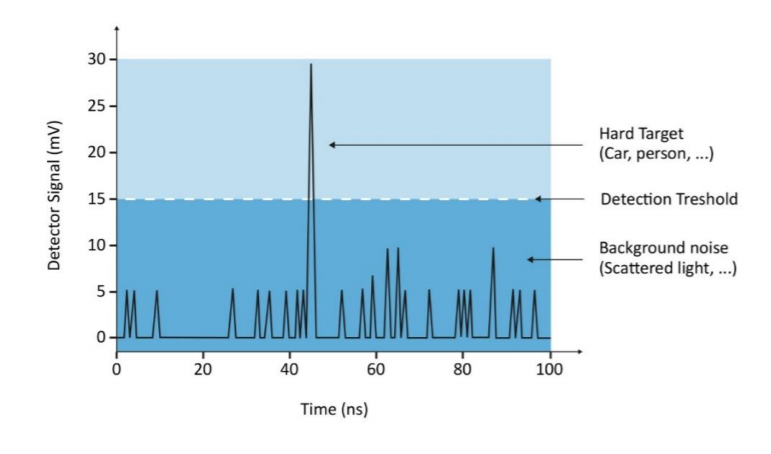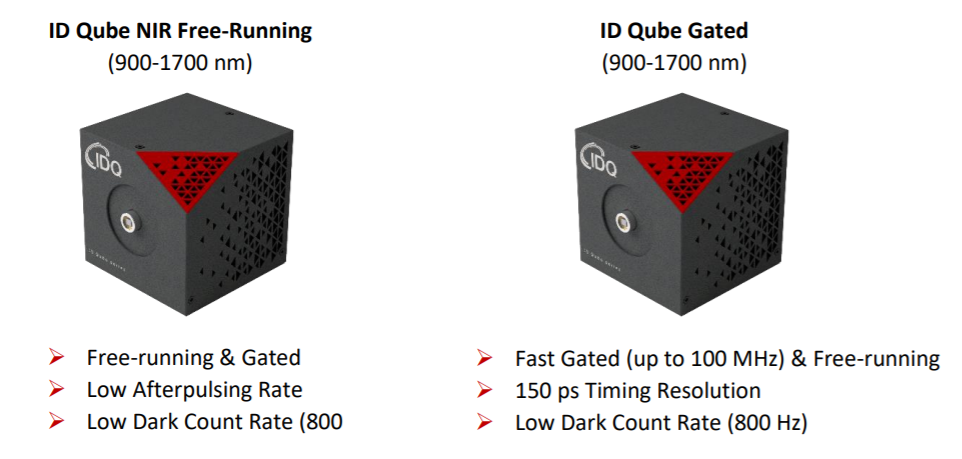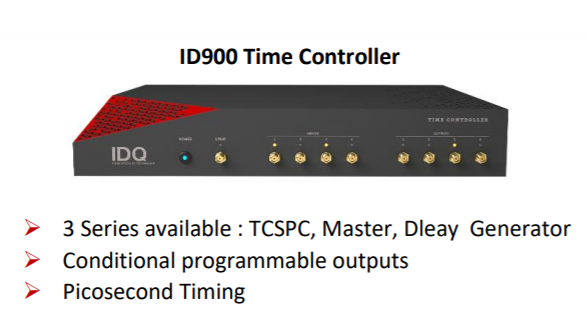You might be creating powerful technology in a commercial environment – or pushing boundaries in quantum communication, computing or optics through your research. If you are using photon correlation in your work, to check particle sizing, quantum key distribution or signal to noise ratio enhancement, ID Quantique (IDQ) can provide the efficient equipment you need.
As a leading manufacturer of photon counting modules, timing electronics and photonic sensing solutions for industrial and research applications, our equipment offers you state-of-the-art precision, speed and performance. Our products are designed for accurate measurement, excellent timing resolution, fast detection, lower noise and adjustable parameters to make sure everything is aligned properly.
It is ideal if you are creating a new laboratory, or preparing to undertake new experiments that include a single photon source, or more complex one such as swapping entanglement to benefit from the best equipment that enables you to demonstrate the results as effectively as possible with real peace of mind.
Author:
Majid Panahandeh (PhD NTU 2014)
At a glance: • Knowledge article • Method •Setup
+State of the art Photon Correlation Applications +Single-Photon Detector +Time controller +Spectroscopy +LiDAR
Contents
1. Photon Correlation at-a-glance
2. Three ways to apply photon correlation
2.1 Single-photon source characterization
2.2 Photon Correlation Spectroscopy(PCS)2.3 Photon Correlation for metrology – LiDAR
3. Products
Photon correlation at-a-glance
In general, we say that 2 or more photons are correlated if the results of a given measurement on
each individual photon exhibit a relationship. For instance, 2 photons that are time-correlated (which
is the usual case with photon correlation) will show a relationship on their arrival time measurement.
Often, the relationship is simple – the 2 photons are more likely to be detected at the same time or
be detected with the same time difference.
Nevertheless, the correlation nature could be very different from one application to another. To
some extent, correlation between photons is so strong that it cannot even be described by classical
physics. In that case, we talk about quantum correlation.
Three ways to apply photon correlation
The basis of a correlation setup will consist of 2 single-photon detectors and a TCSPC (timecorrelated single photon counting) device. In our example, using IDQ's ID Qube series and ID900
Time Controller.

1. Single-photon source characterization
Purity measurement: A perfect single-photon source generates pure single photons, in other terms, a
quantum state of light that only contains the single-photon Fock state component |1⟩. In the real
world, none of the single-photon sources are perfect and there is always a small fraction of 2 photon
Fock state |2⟩ and more in the quantum state.
For this reason, it is important to characterize the photon-source by measuring its purity, in other
words how much 2 photons (or more) component is contained in the state.
Hanbury Brown and Twiss (HBT)1 measurement is exactly measuring this: The output of the singlephoton source is sent into a beam splitter. The outputs of the beam splitter are then sent to the basic
correlation setup as described below.
Making the histogram of the detectors time difference leads to the histogram shown below:

The fact that there is almost no double detection for zero-time difference makes sense because the
single-photon source is sending one photon, and not more, at once. In that case, we talk about anticorrelation. The remaining counts at zero are attributed to the SPS imperfection and thus decrease
the purity of the source.
One can use almost the same setup to characterize the distinguishability of the SPS by doing an
Hong-Ou-Mandel (HOM)2 experiment.
2. Photon correlation spectroscopy (PCS)
In this application, we are looking at the scattered photons light from a sample (solution or gas) that
contains particles from nanometer to micrometer size. Because of the Brownian motion of those
particles, we observe fluctuations in time on the arrival of the photons scattered by the sample.
Small particles produce fast fluctuations while larger particles produce slow fluctuations as shown
below:
.png)
From this data, one can reconstruct the autocorrelation function and determine the size of the
particles from the dominant fluctuation frequencies. It is essential for this application to have a very
good high timing resolution to be able to measure fast fluctuations of small particles. Using any IDQ
single photon detector and ID900 Time Controller will lead to state-of-the-art picosecond precision
photon correlation spectroscopy.
3. Photon correlation for metrology – LiDAR
Photon correlation is also used in LiDAR applications to improve signal to noise ratio. In principle, this
allows LiDAR to detect obstacles even in very bad visibility conditions. Indeed, because the LiDAR is
sending short and bright pulses, we receive a lot of scattered photons from a hard target in a very
short time window.
Scattering from fog, rain or snow lead to photons spreading out in time because those soft targets
are spread out in space. Long distance LiDAR requires ability to detect few photons and distinction
between scattered photons from fog and diffuse objects and hard targets (people, animals, trees,
etc). Correlation helps to achieve this.
Considering only detections of 2 or more photons (this threshold could also be 3 or more photons),
one can almost annihilate contribution from the soft target, as described below:

Products
Our single-photon counters are available in free-space or fibre-coupled (SMF/MMF) versions. They
offer the possibility to receive external pulses for fast and slow gating operations depending on the
model.
A first module is optimised for fast-gated (up to 100 MHz) operations at telecom wavelengths,
specially suited for quantum communication protocol while a second module offers ultra-low noise
free-running operation mainly required for photon correlation and Time of Flight measurement.

Be even more efficient in the lab. ID Quantique’s products are specially designed to be combined
together. We recommend to operate the ID Qube detectors together with the ID900 Time Controller,
IDQ’s central platform which combines the functionalities of a Time-tagger, delay and pattern
generator.
It aims to efficiently and reliably solve a large number of problems encountered in the modern
laboratory.
